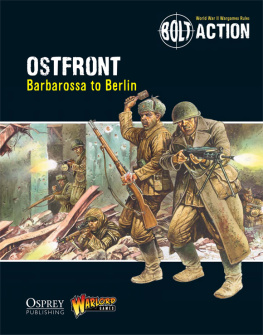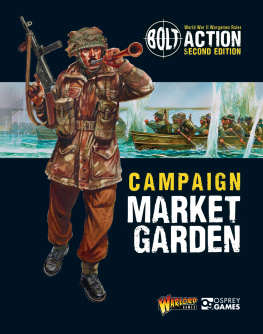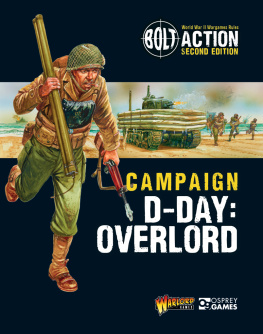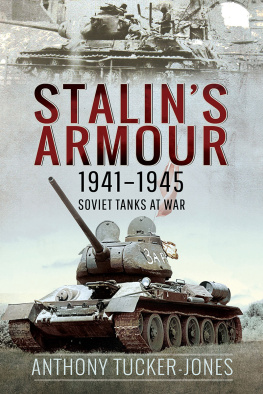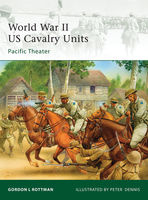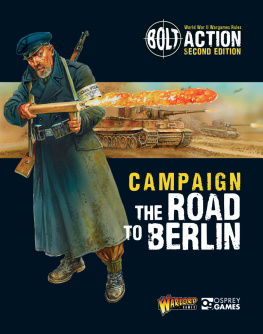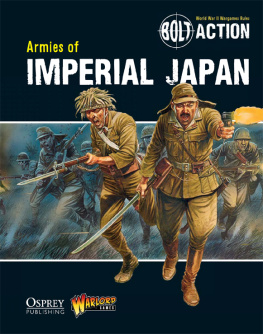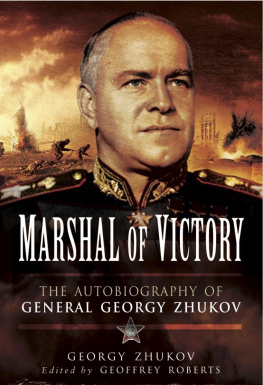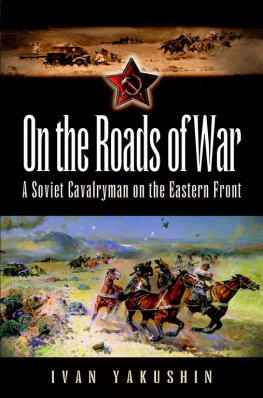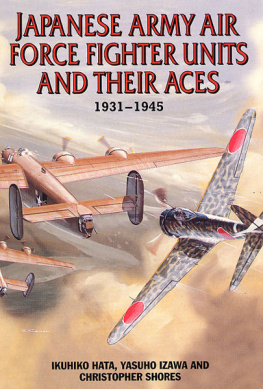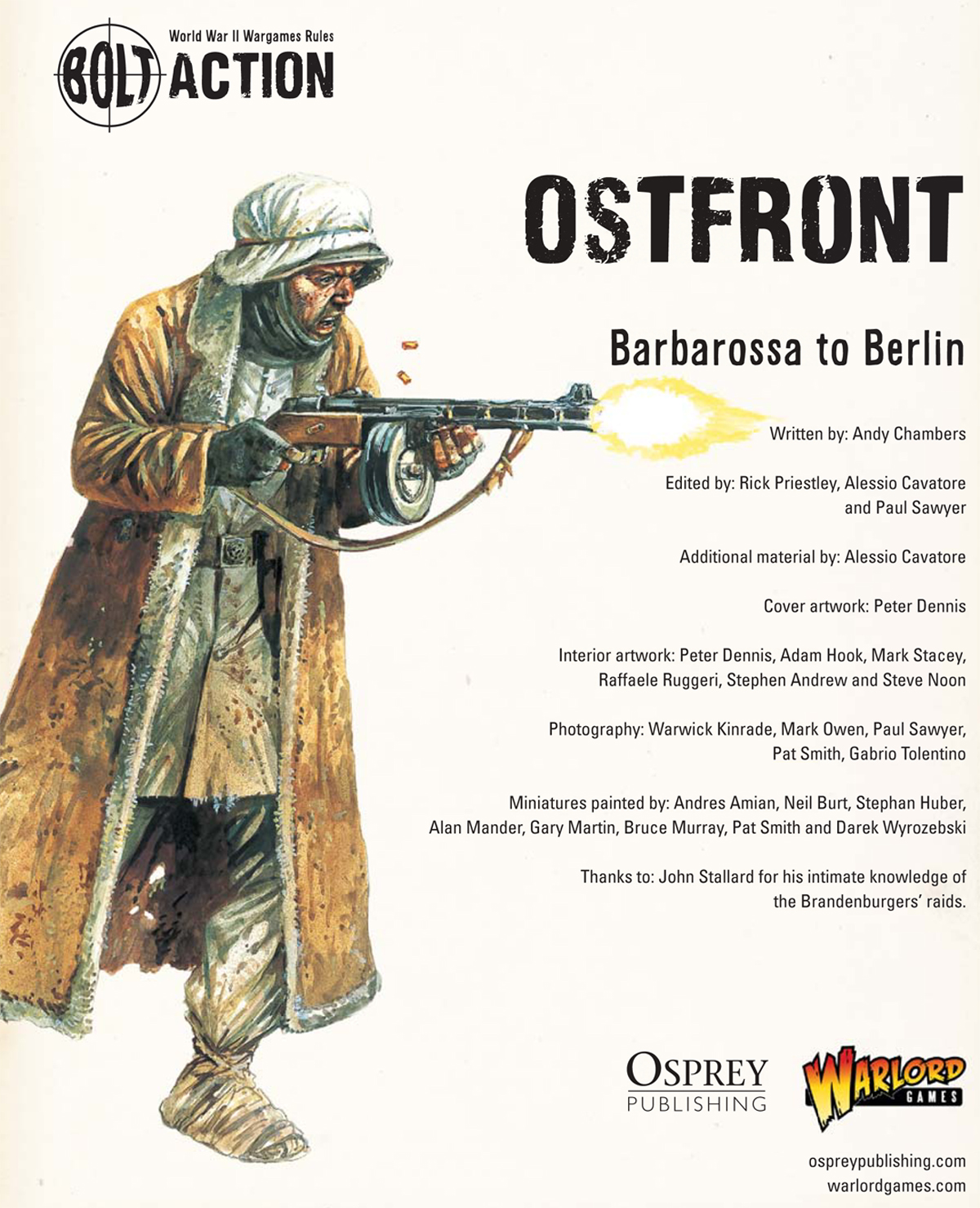
CONTENTS
WHAT IS THIS BOOK?
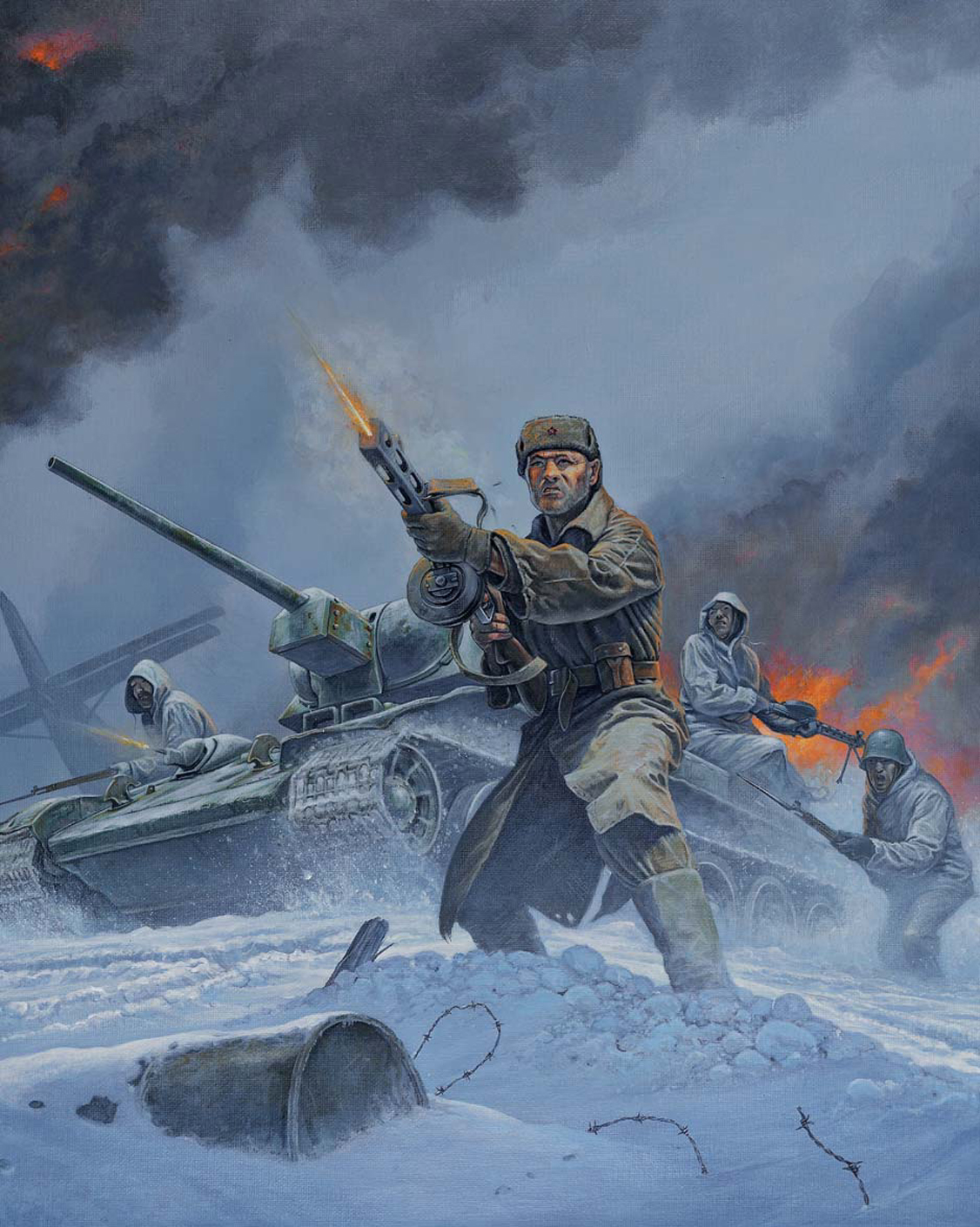
Tatsinskaya, 1942, by Mark Stacey Osprey Publishing Ltd. Taken from Raid 30: Red Christmas.
BATTLES OF THE EASTERN FRONT
T his is a supplement to the tabletop wargame Bolt Action. It deals with the sprawling Eastern Front conflicts between the Soviet Union and its neighbours between 1939 and 1945. We begin with two conflicts, Khalkyn Gol and the Winter War, which did much to shape military and political thinking prior to the outbreak of The Great Patriotic War in 1941 when Nazi Germany and its Axis satellites invaded Soviet territory.
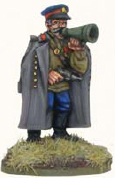
Winston Churchill, in his masterful The Second World War, bemoans the fact that the battles of his period are no longer the clear-cut, single-day affairs of his illustrious forebears, but complex operations extending over broad swathes of territory for weeks or months. Nowhere is this more true than on the Eastern Front. The scale and intensity of the battles fought in that conflict Leningrad, Moscow, Stalingrad, Kursk and a thousand others almost beggar belief in Western eyes. Tens of millions died in fighting that raged virtually without pause for four years across thousands of miles of territory.
The staggering scale of the Great Patriotic War means this lone book cannot hope to be a definitive account of it all. The size and sheer anarchy imposed by the fighting means that records of it are often poor or non-existent. Fortunately, we do have many anecdotal accounts left to us by the men that survived the fighting in the east and this book draws heavily on these wherever possible. The military history of World War II is a fascinating topic and if anything you read about here intrigues you, there are many resources to find out more. Imagine this book as your pointer towards some areas of potential interest, theres much more to be found.
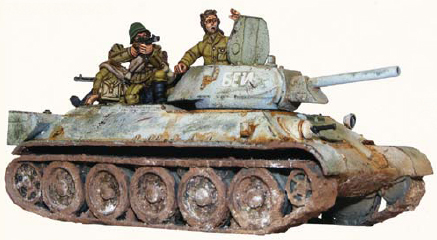
T-34/76 and tank riders
Our hope is to provide some useful context for games of Bolt Action set on the Eastern Front because even across such a vast battlefield the Great Patriotic War was ultimately decided by small groups of soldiers fighting at the sharp end to clear a wood, hold onto a single house or to take a bridge. Even now we remember the actions of a few brave men and women who made all the difference in the midst of armies that could be counted in the millions.
In that spirit youll find several Bolt Action scenarios within this book. Some depict events from historical battles, while others are representatives of typical actions to illustrate the sort of fighting commonly found in the east. For the benefit of collectors and historians weve included details of various units that allow you to construct armies from specific time periods and areas of the Eastern Front. On the other hand, this book also allows for lots of what if battles to be fought out, using equipment that was on hand at the time. Where appropriate, Bolt Action game rules for unusual units, vehicles and weapons used in the east are produced here, although in this regard this book should be considered as supplemental to the appropriate Armies of books for that theatre. The scenarios in this book are written with the assumption you will be using reinforced platoons from either the rulebook or the relevant historical Theatre Selector from an appropriate Armies of book. However, feel free to use armoured platoons from the Tank War supplement where you feel it appropriate this will allow you to play the same scenario using either reinforced or armoured platoons (or a mix of both!), with a resulting great variety of feel and balance to the scenarios played.
Have fun!
KHALKYN GOL
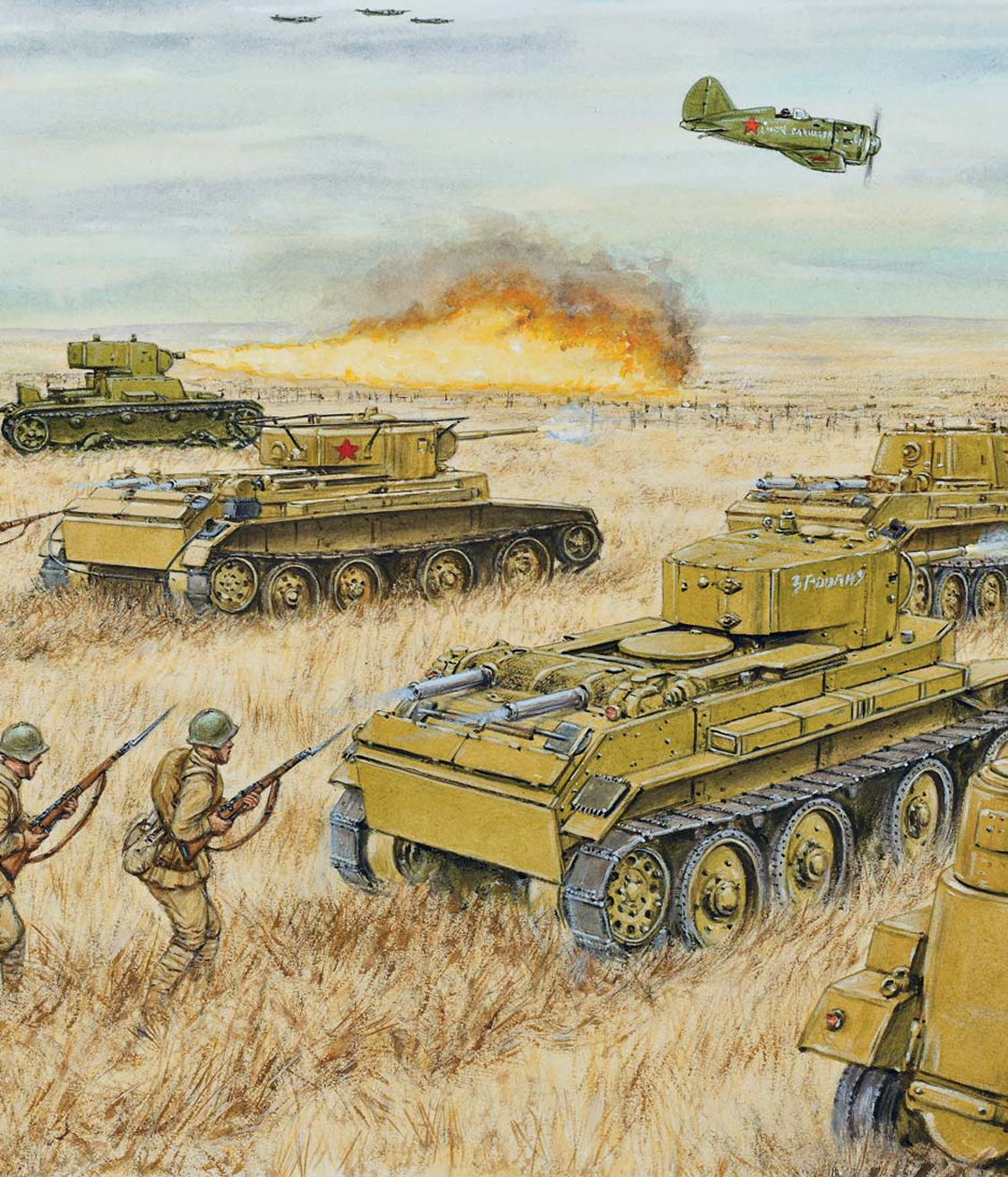
The Southern Task Forces offensive, by Adam Hook Osprey Publishing Ltd. Taken from Command 22: Georgy Zhukov.
PRELUDE
The battle of Khalkyn Gol (English: Khalkyn River) took place in 1939 on the border between Manchuria and Mongolia. The Japanese empire occupied Manchuria in 1931 and ran it as a puppet state named Manchukuo. Mongolia, on the other hand, had become the second communist country in the world in 1936 by signing a treaty with the Soviet Union. The border between these two satellite states was hotly contested and armed clashes were not uncommon between them. A long-running border dispute existed over precisely where Mongolia ended and Manchuria began.
The powerful Japanese Kwantung Army ruled Manchukuo as its virtual fiefdom, and its leaders were strong advocates for a northern expansion of the empire deeper into Mongolian and Soviet territory as far Lake Baikal. While the Kwangtung Army was nominally under the command of Imperial General Headquarters in Tokyo, it frequently acted independently, and had created unsanctioned border incidents with Manchuria to justify its invasion in 1931.
A small battle had already occurred in 1938 near Lake Khasan when Japanese forces were defeated after they tried to evict Soviet units that were fortifying high ground close to the border. According to the Japanese the border itself lay along the bank of the Khalkyn River, while according to the Soviets it lay almost ten miles east of the river, just to the east of a village called Nomonhan. To the Japanese the events that followed would become known as the Nomonhan Incident.
FIRST CLASHES
On 11 May 1939, a detachment of Mongol cavalry moved into the disputed zone east of the river to graze their horses just as they had been doing for hundreds of years. On this occasion a stronger force of Manchukuo cavalry arrived and drove them back across the Khalkyn Gol. On 13 May the Mongolians returned in greater numbers and this time the Manchukuo forces in the area were unable to dislodge them.
Both sides appealed for help from their powerful allies. Japanese and Soviet forces were soon mobilised as the fighting began to escalate. Two regiments of the Japanese 23rd Infantry Division arrived in the area on 14 May, a reconnaissance regiment led by LtCol Yaozo Azuma and an infantry regiment led by Colonel Takemitsu Yamagata. Azumas force pushed forward into the disputed territory and the Mongolians once again withdrew.
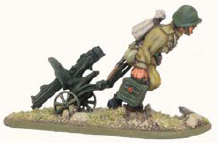
The Mongolians returned, however, and this time they were reinforced by Soviet units from the 57th Special Corps under Comandarm (General) Grigori Schtern. Azuma moved forward to evict the Mongolians again, but ran into serious resistance for the first time. On 28 May Azumas reconnaissance unit was surrounded and destroyed by the combined communist forces. Azumas force suffered eight officers and 97 men killed plus one officer and 33 men wounded.
Both sides started moving up larger forces and the Japanese soon had 30,000 men in the area. On the Soviet side powerful mechanised and armoured forces arrived in the shape of the I Army Group under their new corps commander, a certain Georgi Zhukov. Zhukov would go on to win great fame in the Great Patriotic War, but at this time in his life the Far East assignment had arrived in the nick of time to save him from being imprisoned and most likely executed in Stalins purges of the Red Army officer corps.
Next page
